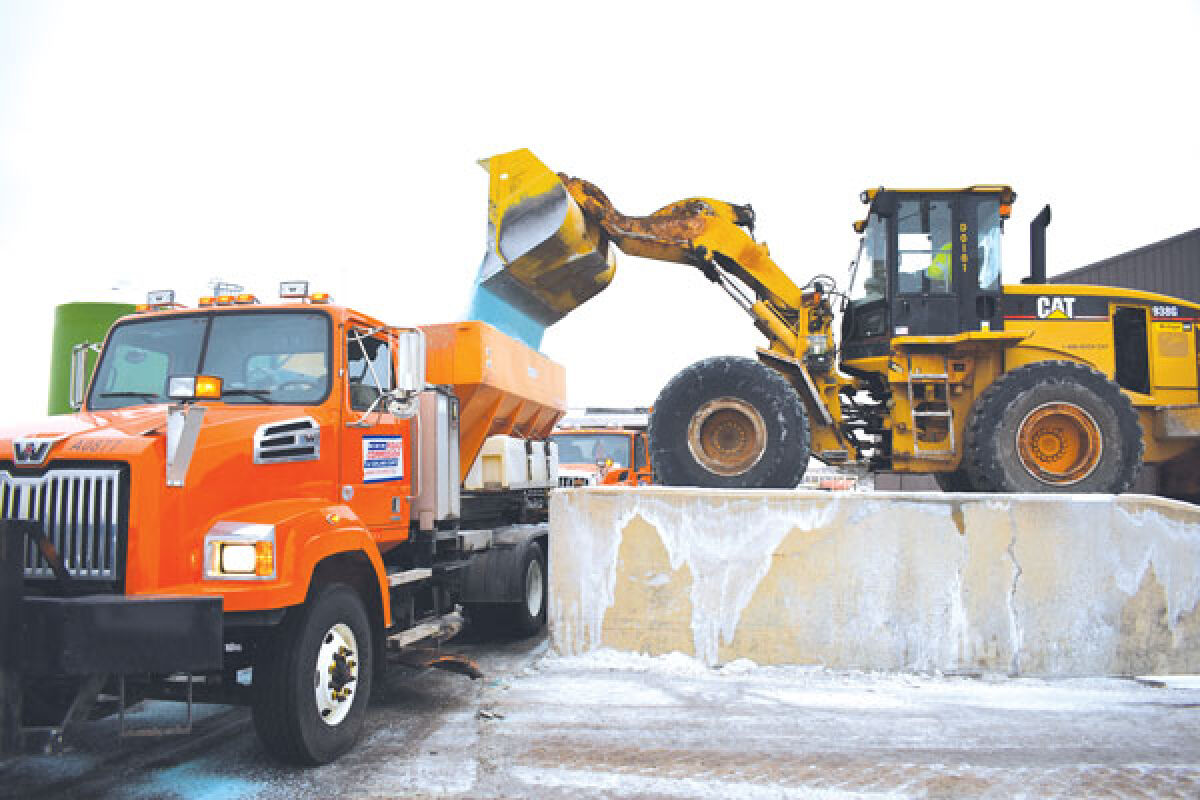SOUTHFIELD — A local environmental group will be testing four different data collection methods to assess chloride contamination in the Rouge River this winter.
Starting Jan. 20 at its stonefly search to assess river health, the Friends of the Rouge will also focus on chloride contamination in the Rouge River, thanks to a Rouge River Watershed Council grant of around $40,000 from the Michigan Department of Environment, Great Lakes and Energy.
“As an urban watershed, when you put salt on the road, a lot of it flows right into the river. So we’ve kind of known that this is a problem,” said Lauren Eaton, the monitoring manager for Friends of the Rouge.
Eaton explained that the Friends of the Rouge has been monitoring road salt in the river since 2020 using free salt watch strips from the Izaak Walton League of America. These test strips have been used at the bug hunts and stonefly searches to collect data to determine how toxic the salt levels are to the aquatic life in the Rouge.
EGLE has set water quality values to protect surface water from chloride based on parts per million concentrations. These are 150 ppm and above, which causes long-term effects to aquatic life called “chronic” effects, and 320 ppm and above, which causes acute effects to aquatic life, called “toxic” effects.
According to the 2022 Fall Bug Hunt Report, seven sites had toxic levels of chloride.
“This is particularly concerning as one would expect road salt applied last winter to be washed out of the system by October,” the report states. “EGLE has already listed Bishop Creek (Novi) as ‘impaired’ due to high salt levels. Tonquish Creek (Plymouth) , Bell Creek (Livonia) and Evans Creek (Southfield) also need further examination due to elevated concentrations.”
Eaton stated that the four different testing methods that will be used are the salt tabs, two different sensor readings, and then a physical “water grab,” which is a cup of water taken from the river that will be taken to an EGLE-approved laboratory that will analyze that water.
“The end goal is to kind of test these different methods, but then also to provide our data to EGLE at the end of it so that they can dial in and pinpoint source of chloride to the river, and then go in and assess further and potentially remediate the problem,” Eaton said.
Eaton said it’s a delicate balance when it comes to adding just the right amount of salt to the roads to ensure that drivers are safe and that watersheds aren’t contaminated.
According to Jocelyn Garza, a communications specialist for the Michigan Department of Transportation, Michigan spends $100 million statewide on winter road maintenance.
Garza explained that the only salt alternative currently in use is a deicing agent called calcium magnesium acetate, or CMA, which is only used on the Zilwaukee Bridge in Saginaw County.
“CMA is a low corrosive deicer, but it is only used on the Z Bridge,” Garza stated. “While it does work as a deicing agent, it’s difficult to determine if it is more effective than salt or works faster than salt.” CMA is more expensive than regular road salt, with road salt costing $50-$60 per ton and CMA costing $2,000 per ton and not sold in bulk supply. Garza added that CMA requires a different application process, so the truck used to treat the Zilwaukee Bridge is specially outfitted.
“There are other measures the department has taken to improve salt application, thereby reducing the amount of salt we use, but these are not alternatives to salt. There seems to be a misconception that different products can replace salt. To date, we have not found one that does, but when using an agricultural bi-product as a boosting agent, it can improve the productivity of salt by lowering the freezing point and staying in place long enough for salt to do its job.” Garza said.
MDOT said it has reduced salt usage by adjusting its practices for more than 20 years by prewetting the salt and lowering the speed of a salt truck. MDOT is in year one of a five-year pilot to review liquid-only treatments, which are widely used in Wisconsin. The pilot is being completed in three locations across Michigan and uses a salt brine to treat the roads. If it is found to be effective, the state’s salt trucks will be reworked to include a liquid tank and sprayers. MDOT facilities would also need large storage tanks to hold the solutions, and “immense changes would have to be made statewide in all our facilities if this method is found to be more effective than our current methods,” Garza said.
According to the Road Commission for Oakland County’s winter road maintenance document, the Road Commission maintains Michigan’s largest county road system, with only the state highway system being larger. The Road Commission oversees 2,700 miles of county roads, including 750-plus miles of gravel roads, 116 bridges, 1,500 traffic signals, 150,000 traffic signs and more than 230 miles of state highway. The Road Commission spends about $12 million annually, depending on the winter, on winter maintenance, with $4 million or more on road salt alone.
Craig Bryson, the senior communications manager of the Road Commission, said that applying just the right amount of salt to the roads without harming people or the environment is a constant challenge.
“There’s a lot that goes into this,” he said. “And it’s a very challenging thing for our supervision staff who have to make those calls. The danger is, you say, ‘OK, I want to conserve salt. I’m not gonna salt. This snowfall isn’t going to accumulate too much.’ And if you’re wrong on that, and the roads ice up, and people die, that’s horrific.”
Bryson explained that the Road Commission has been working for decades to address this issue. Its regulations now call for about 400 pounds of salt per mile, which is half the amount that used to be applied. They have shifted away from using gravity-reliant salt trucks that tilt for application because there is less control over how much salt comes out.
“What we do now is we actually spray the salt with liquid brine, which is naturally occurring saltwater. As it’s coming out of the truck, there are little jets on either side that spray the brine right onto the salt. That means the salt is activating from the moment it leaves the spreader till it hits the road. It’s already becoming active when it actually hits the pavement. That’s allowed us also to reduce the amount of salt we use because the salt is more efficient.”
In addition to this method, the Road Commission also measures pavement temperature gauges across Oakland County. Bryon explained that this has been a critical factor, because sometimes the air is colder than the pavement, which helps determine whether to salt immediately or wait. There are six garages located around Oakland County with around 140 snow plows/salt trucks.
For those interested in testing the Rouge for chloride, the Friends of the Rouge encourages people to register for the stonefly search. The deadline to register is Jan. 6. Registration can be completed at therouge.org/bug-hunts.
For more information on the Road Commission, visit rcocweb.org.
For more information on MDOT, visit michigan.gov/mdot.
 Publication select ▼
Publication select ▼






















